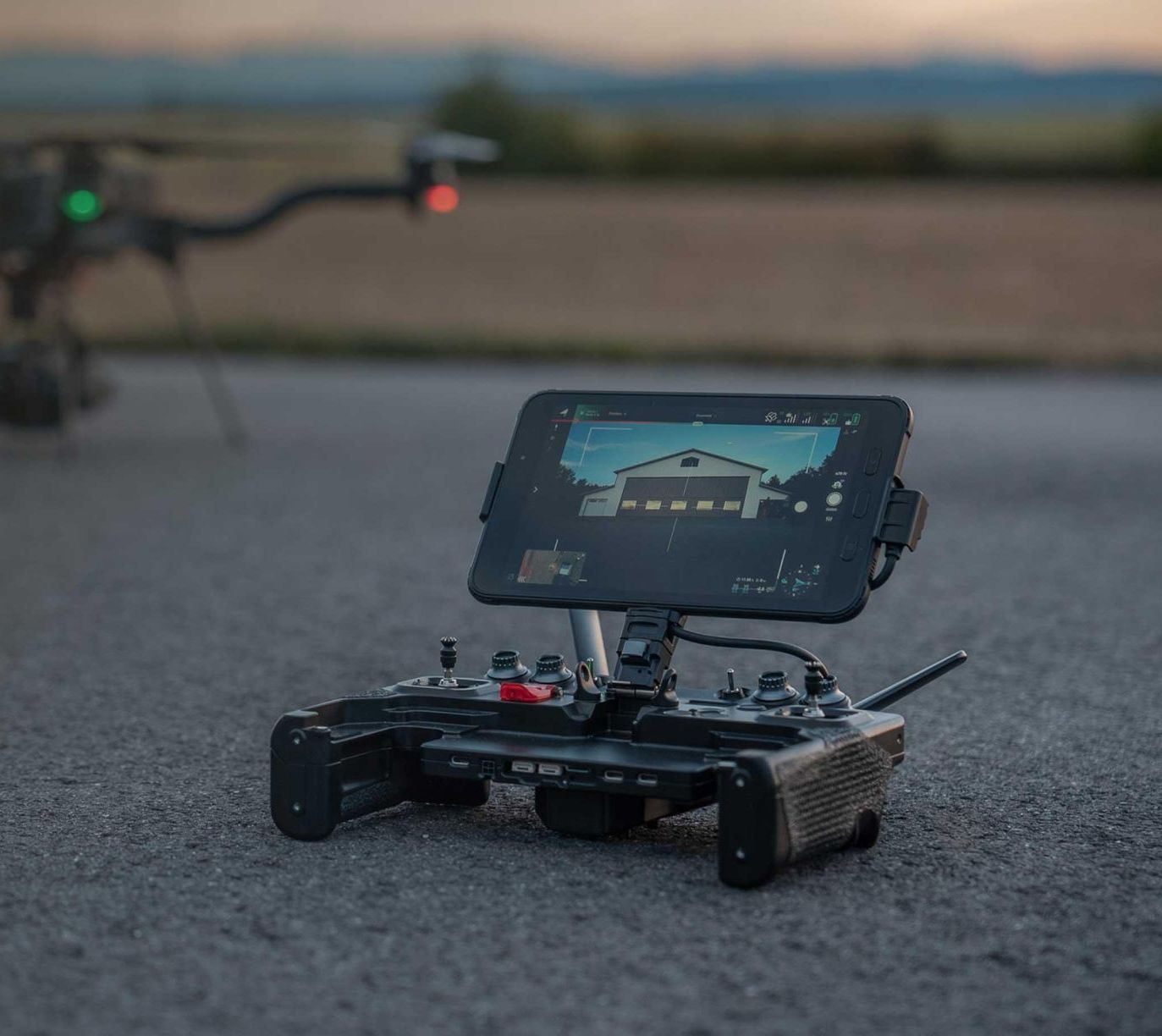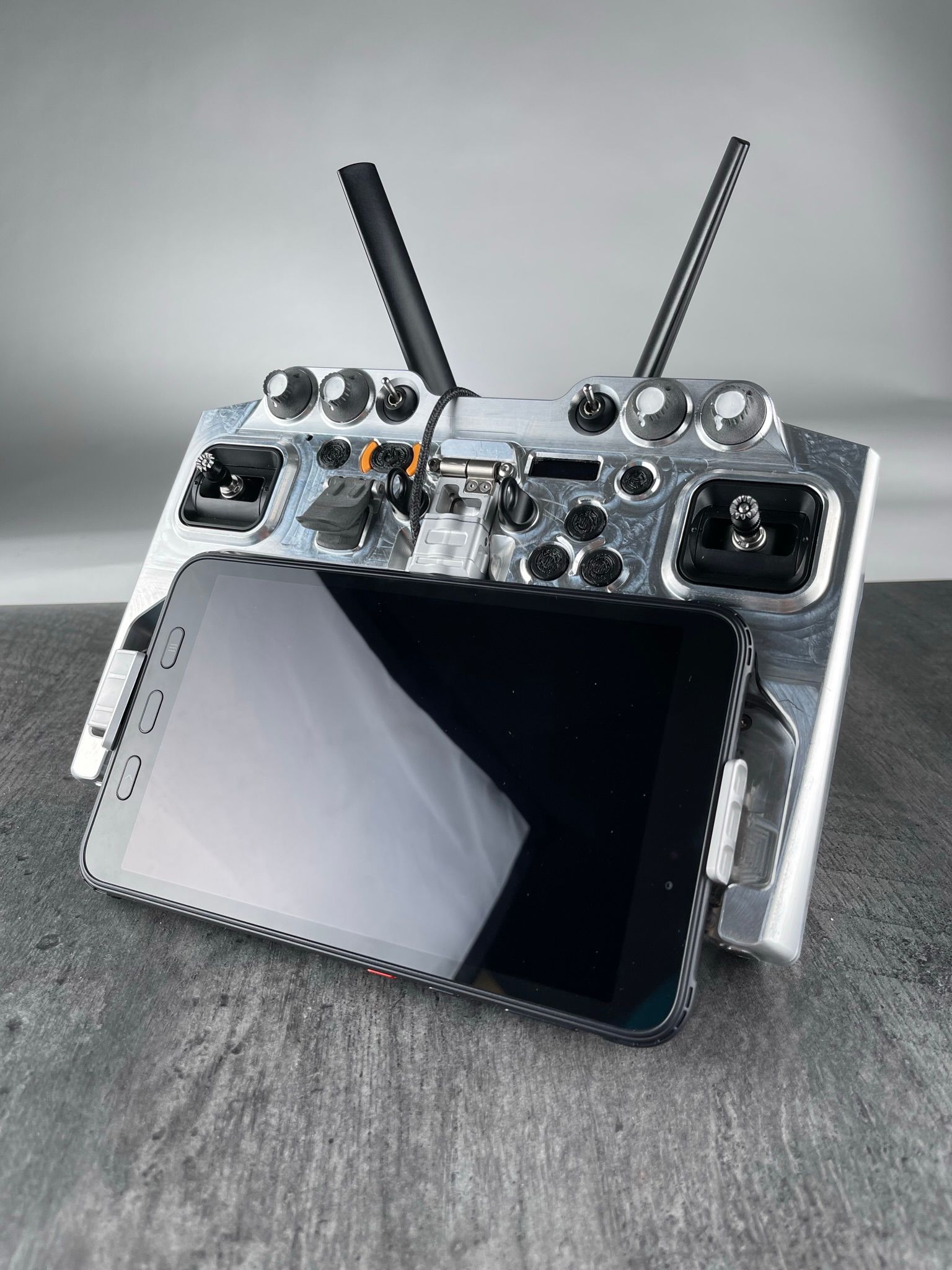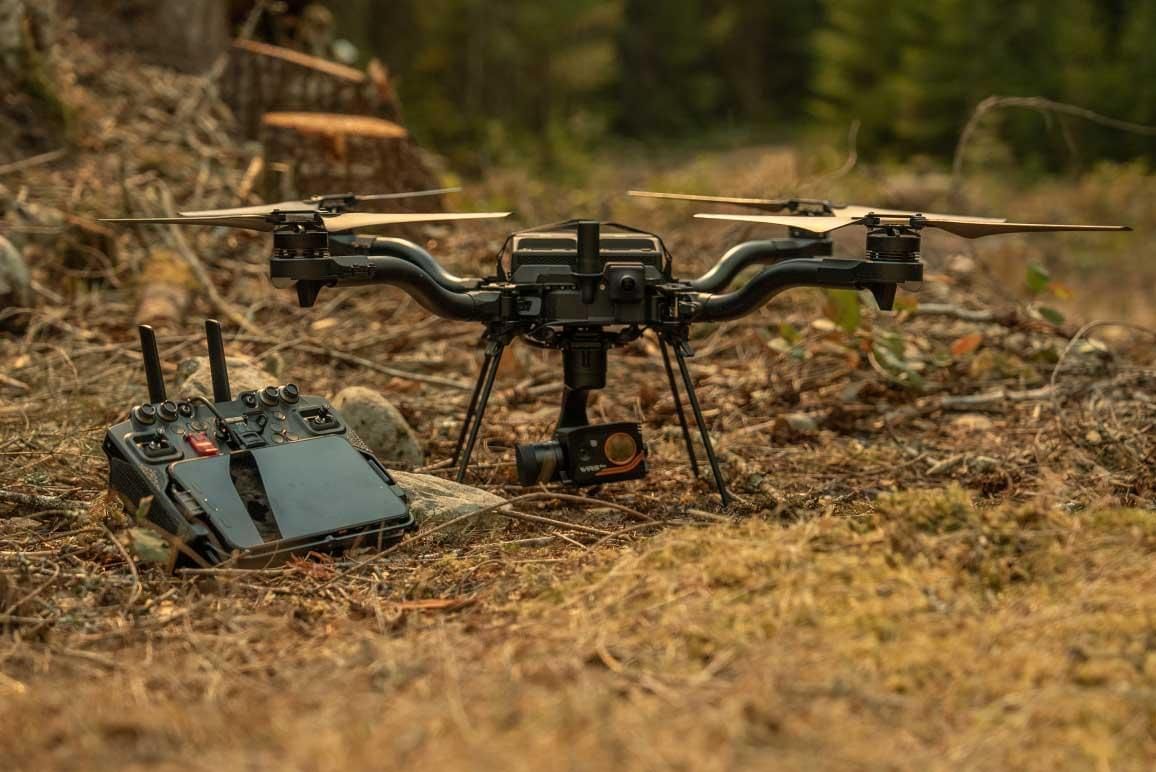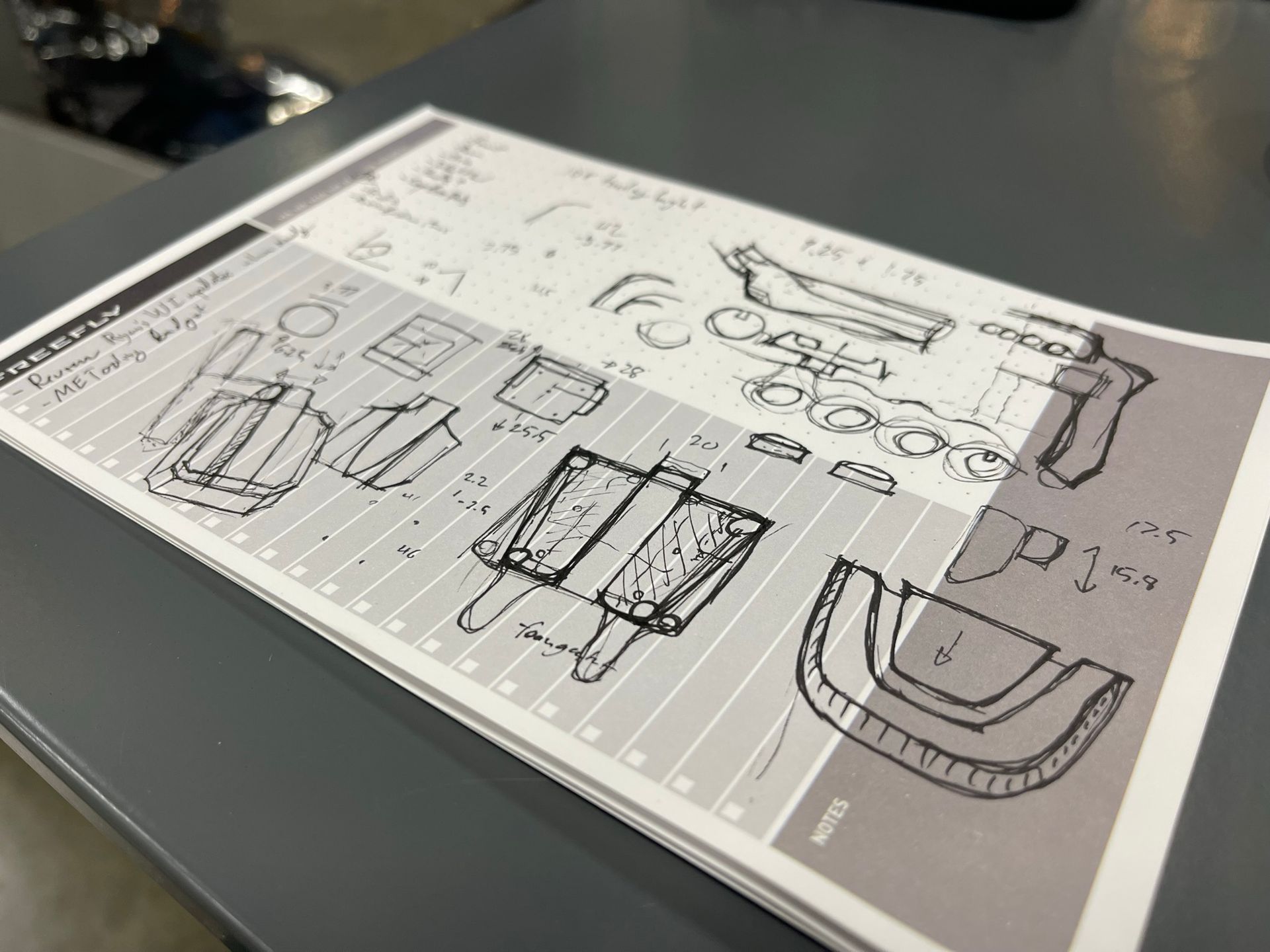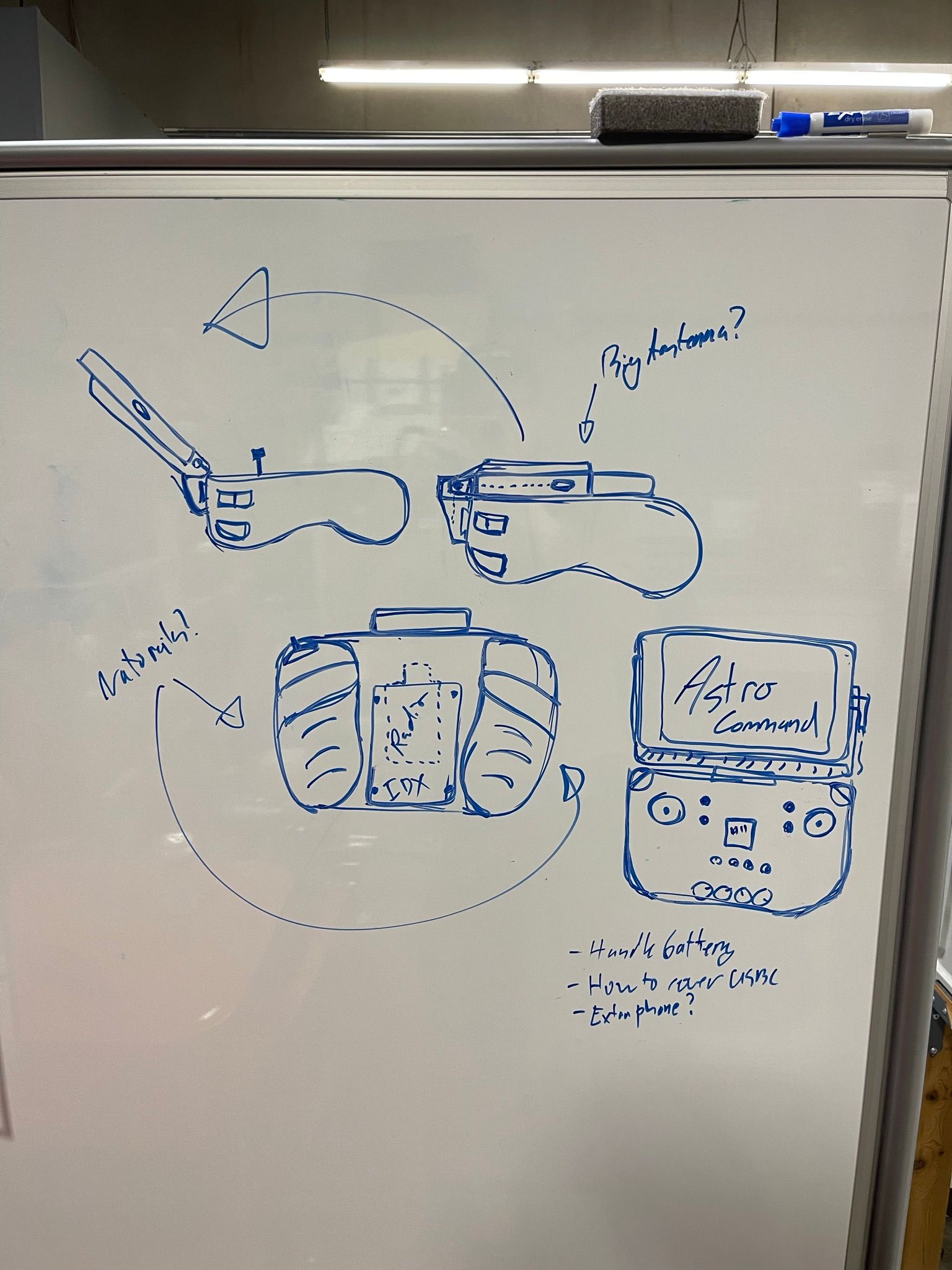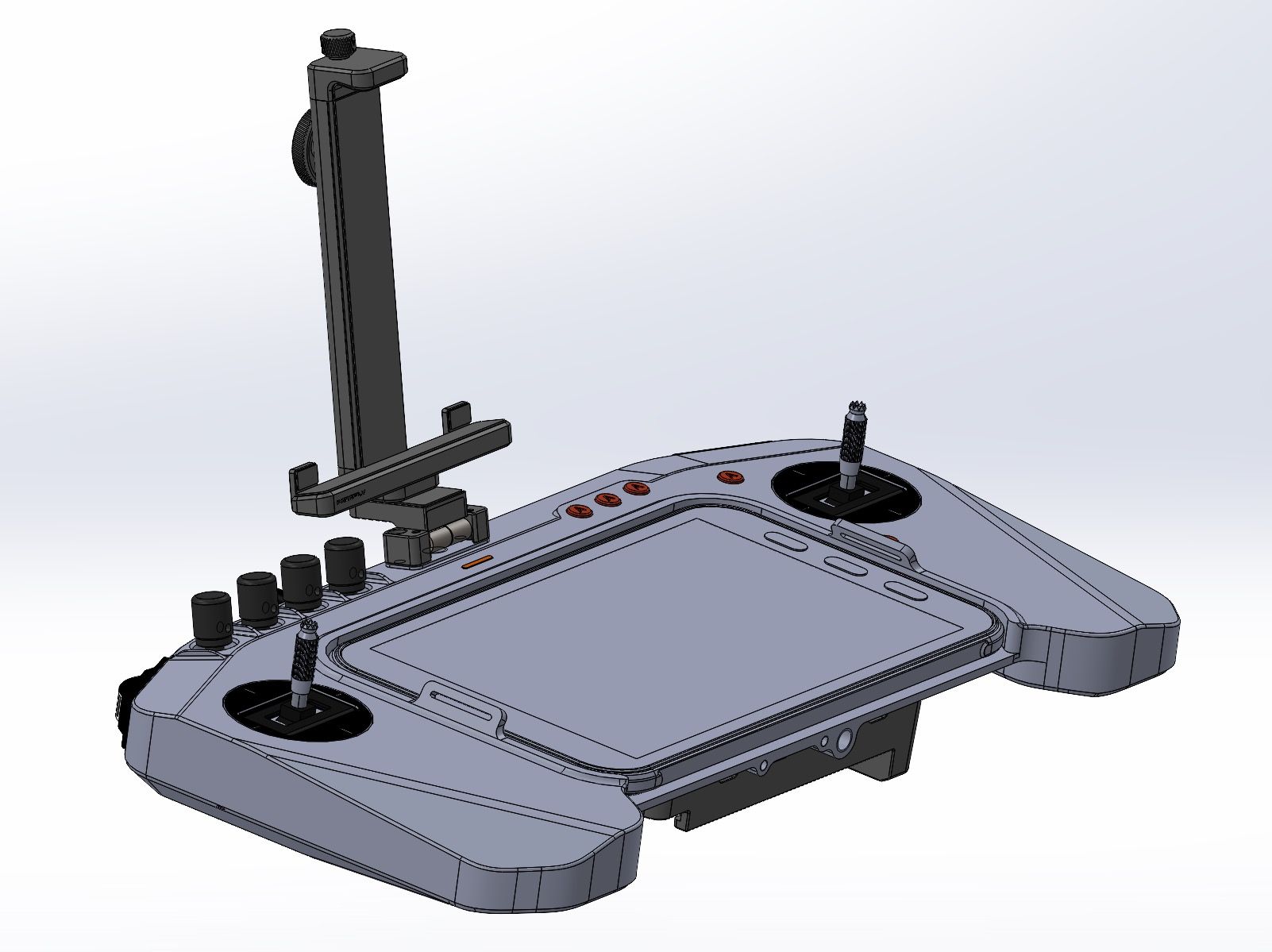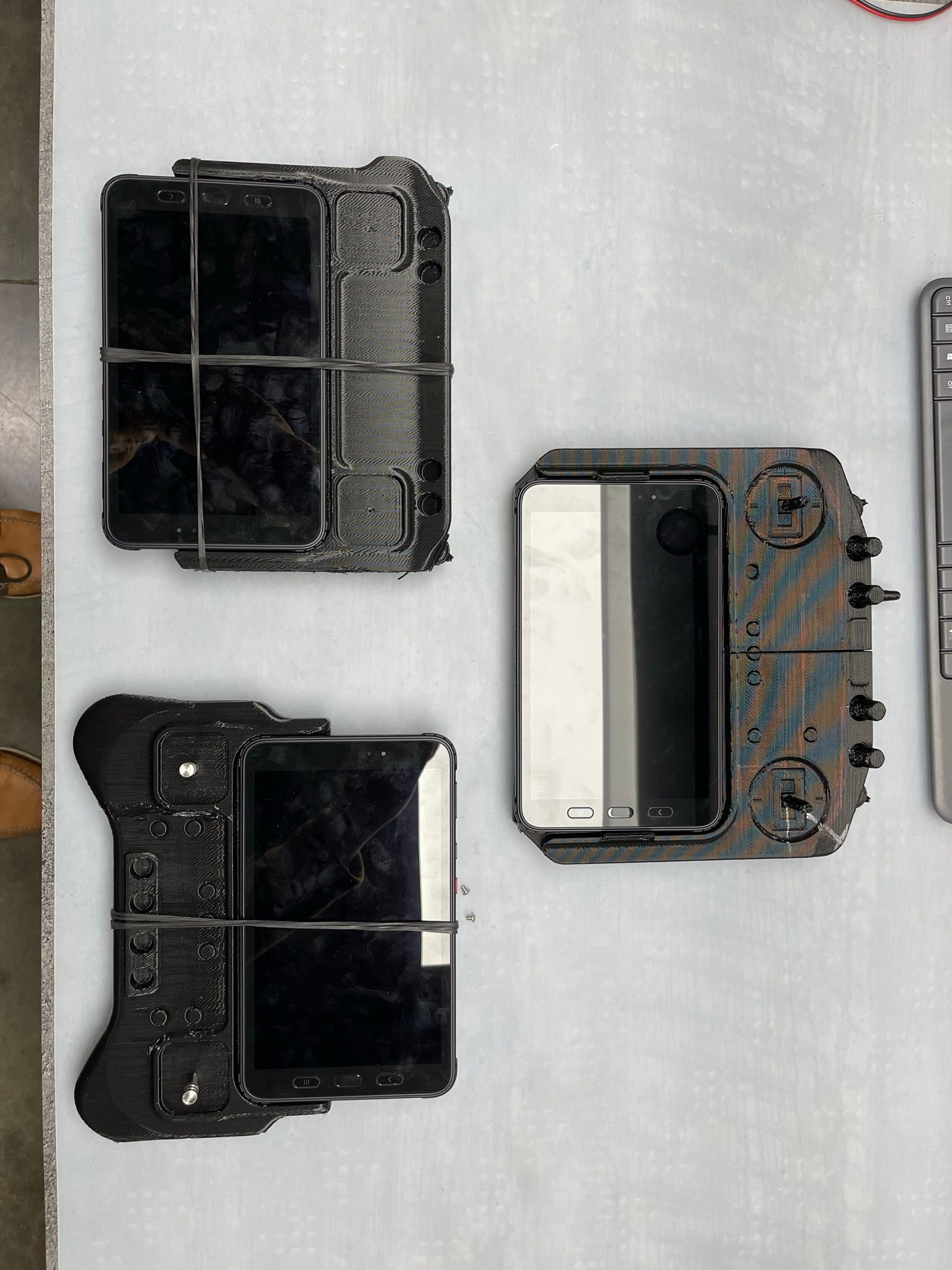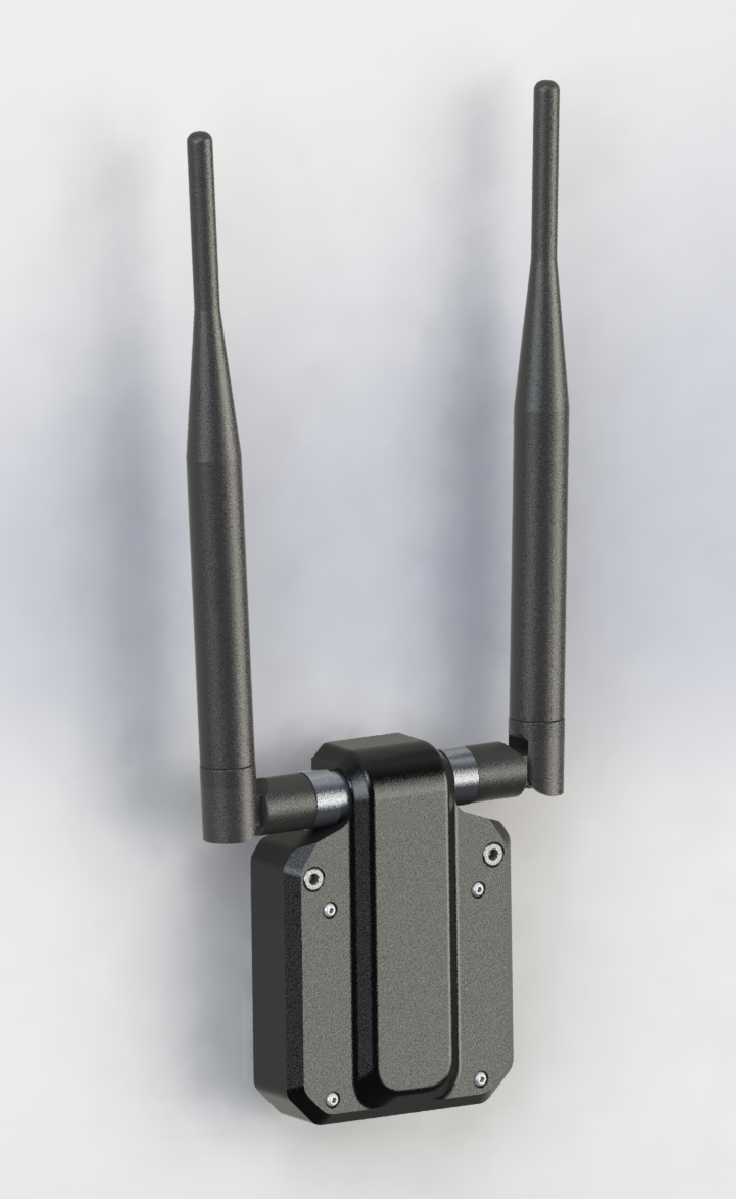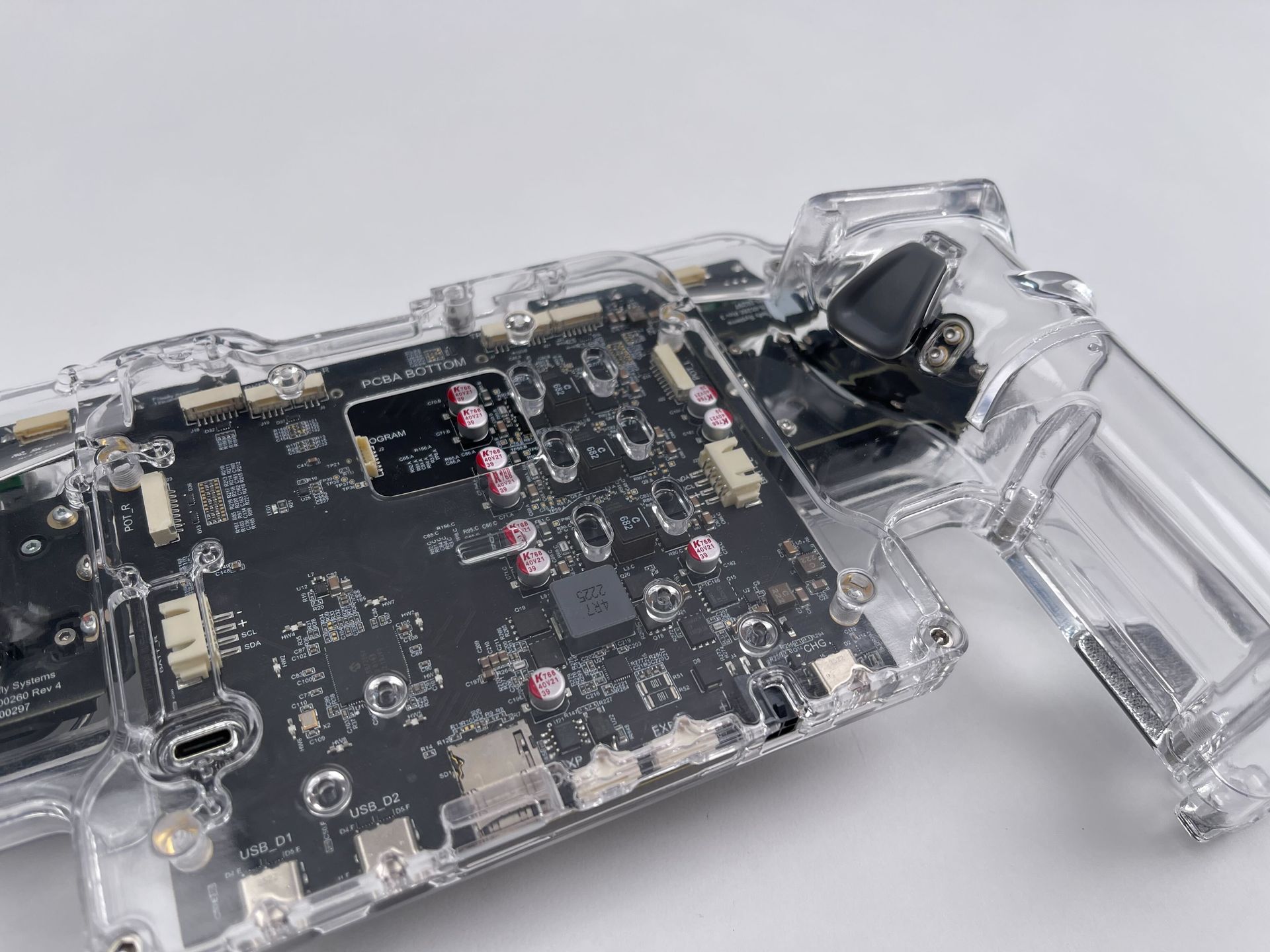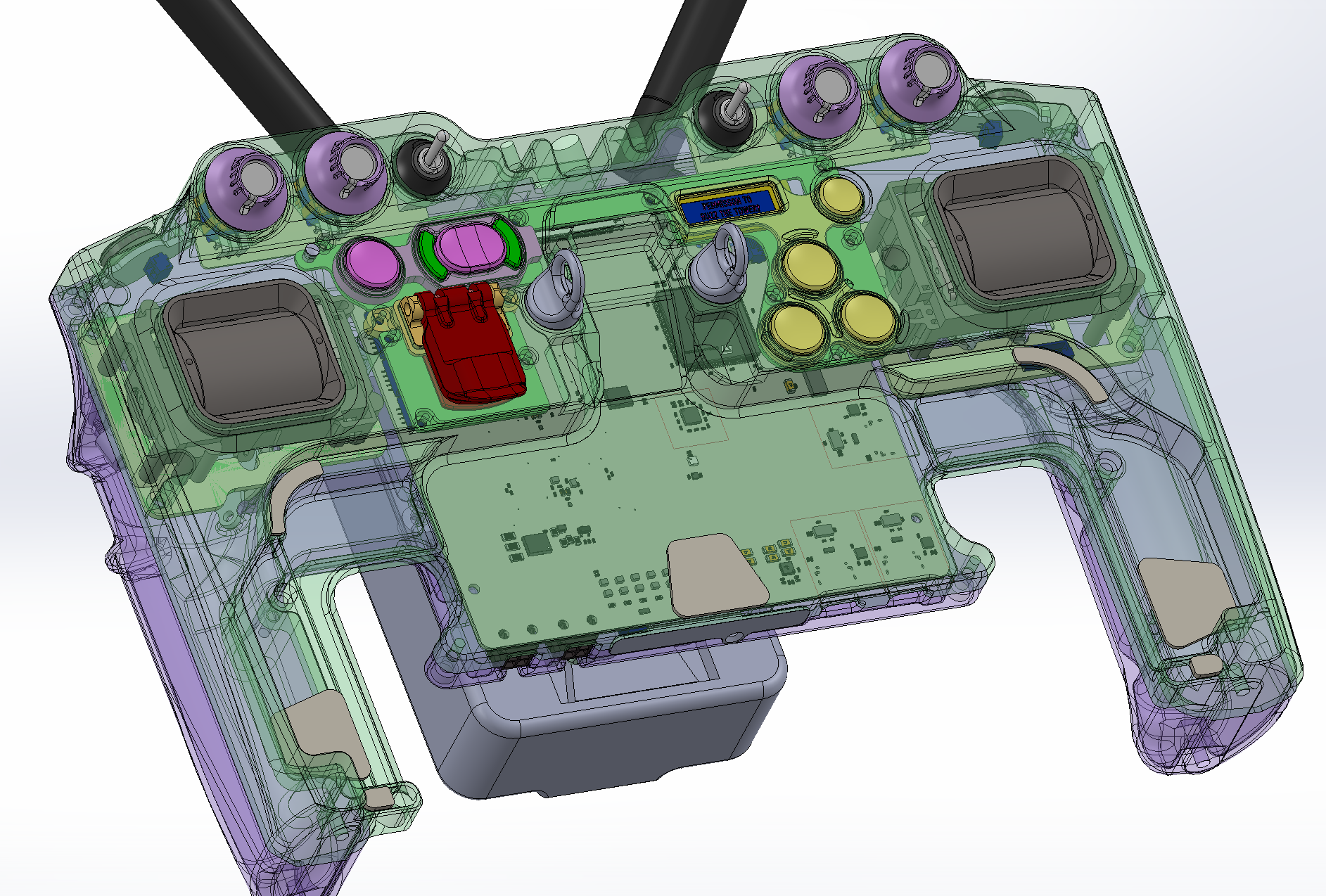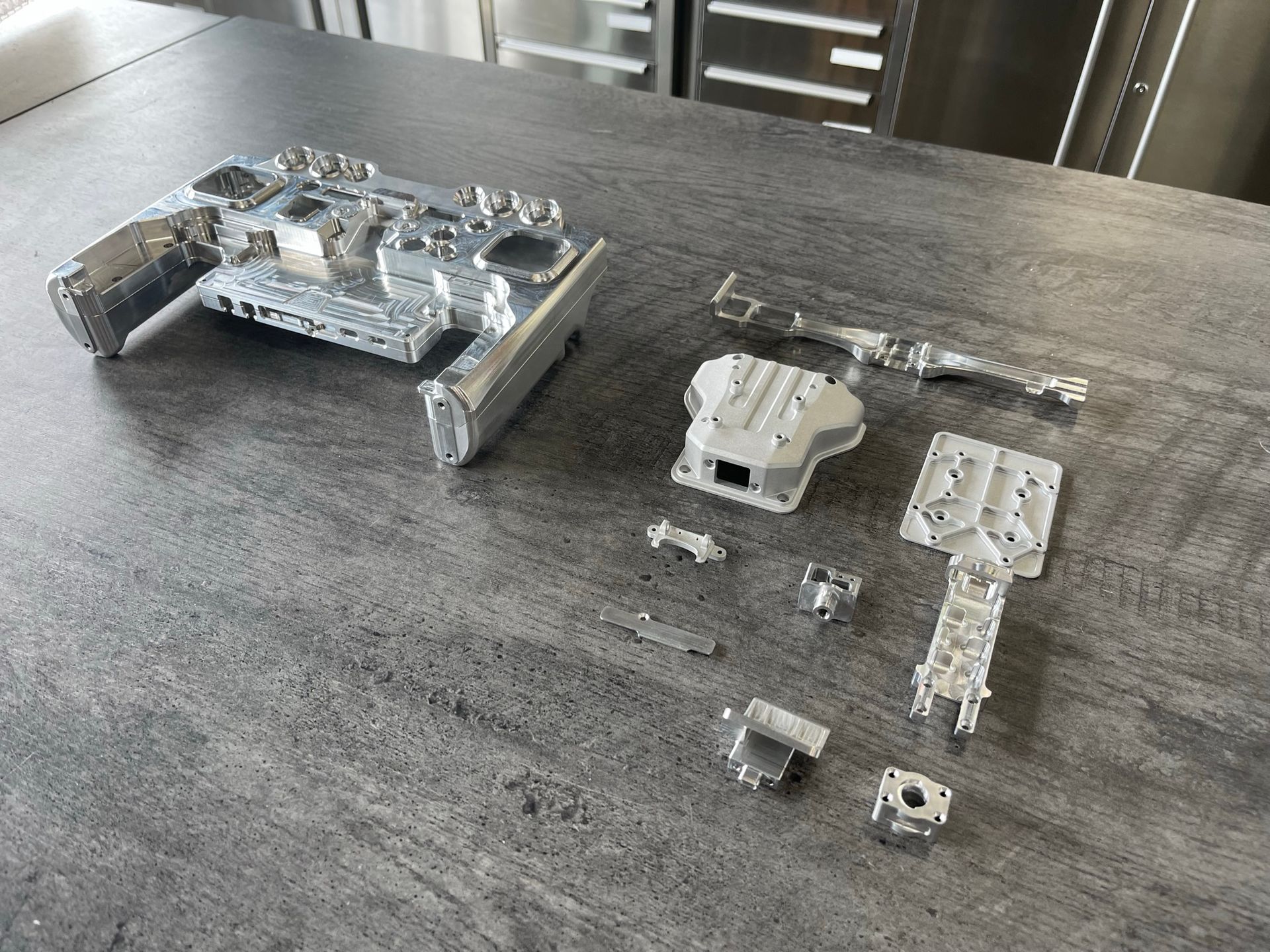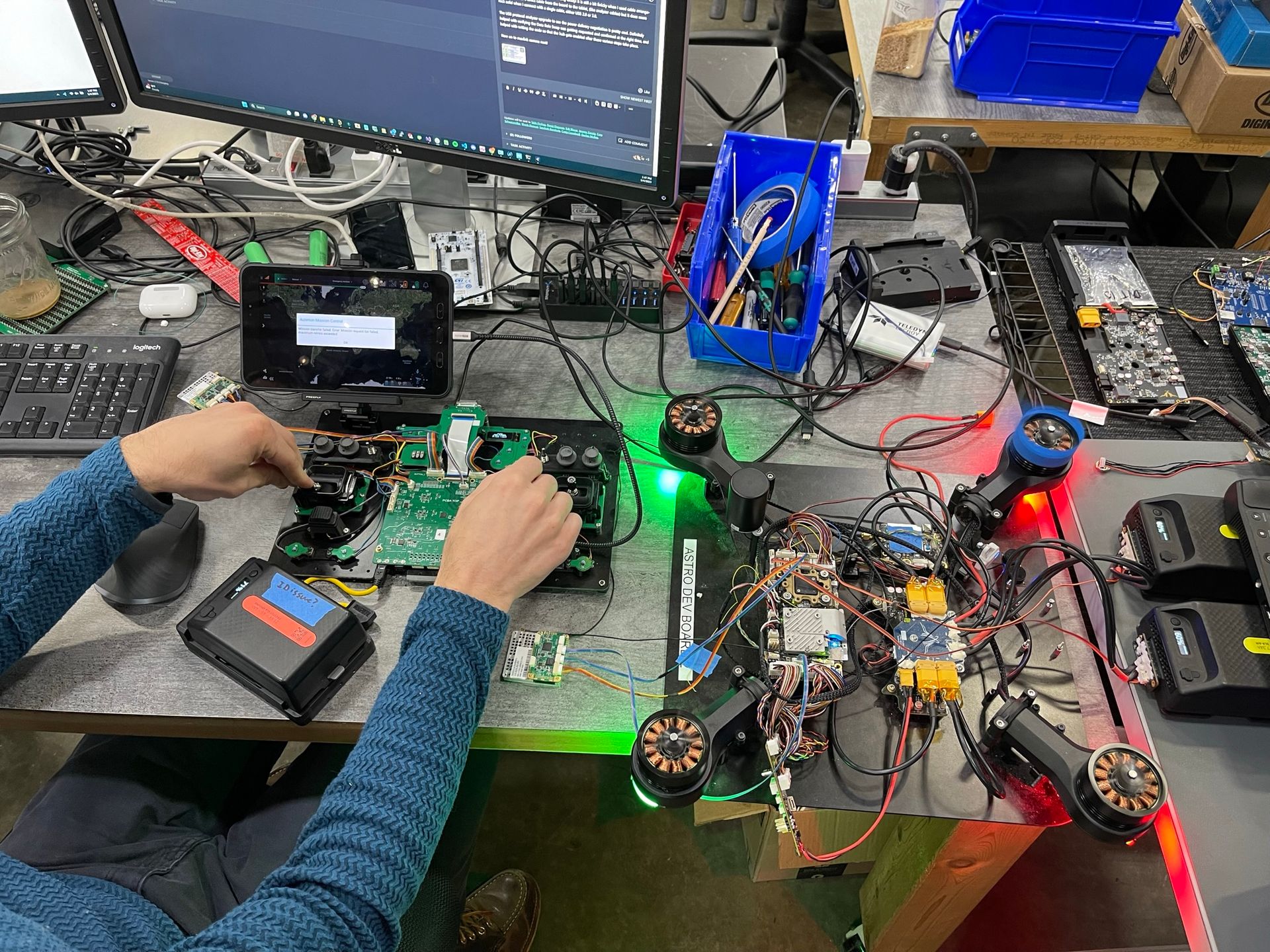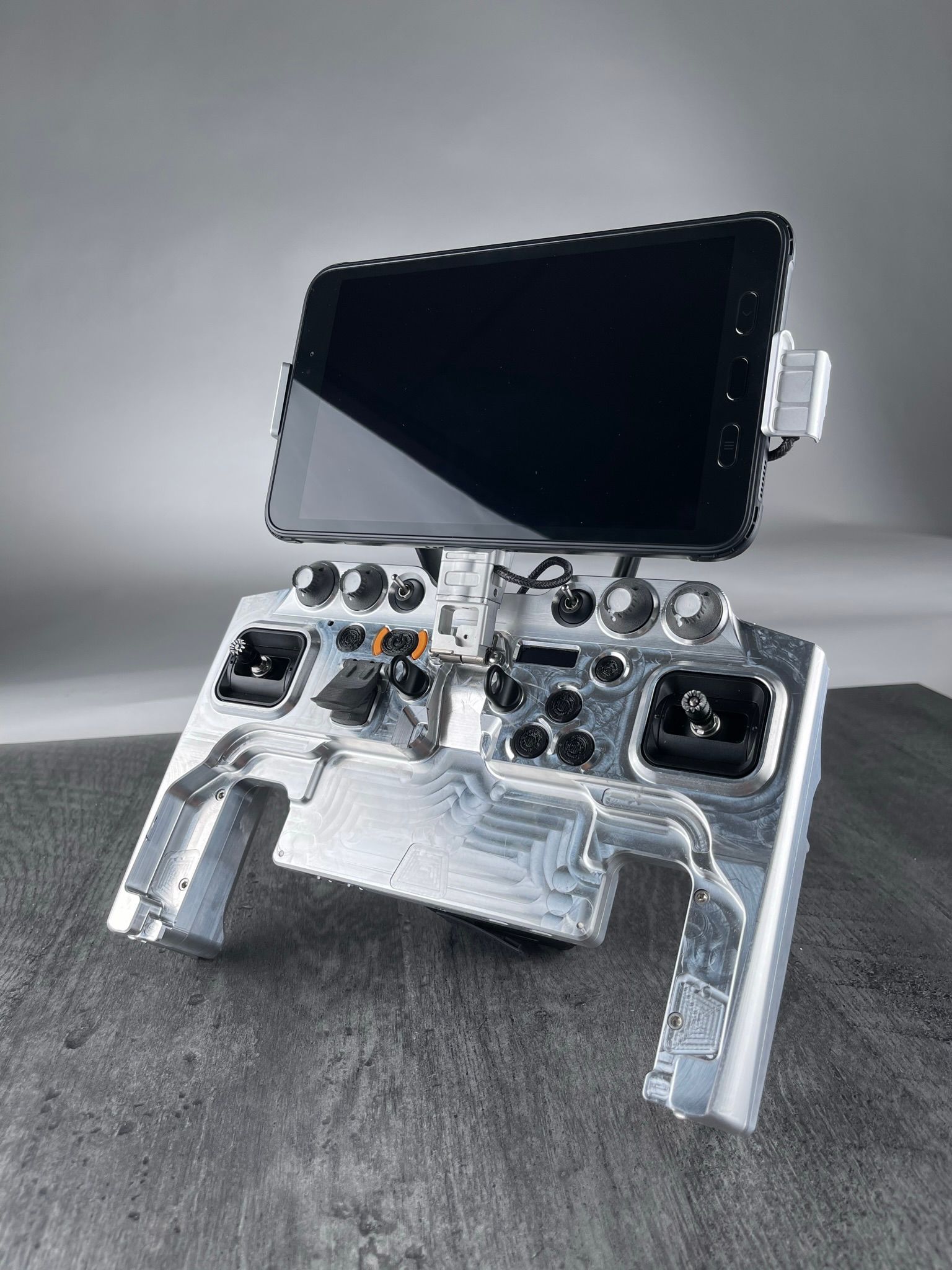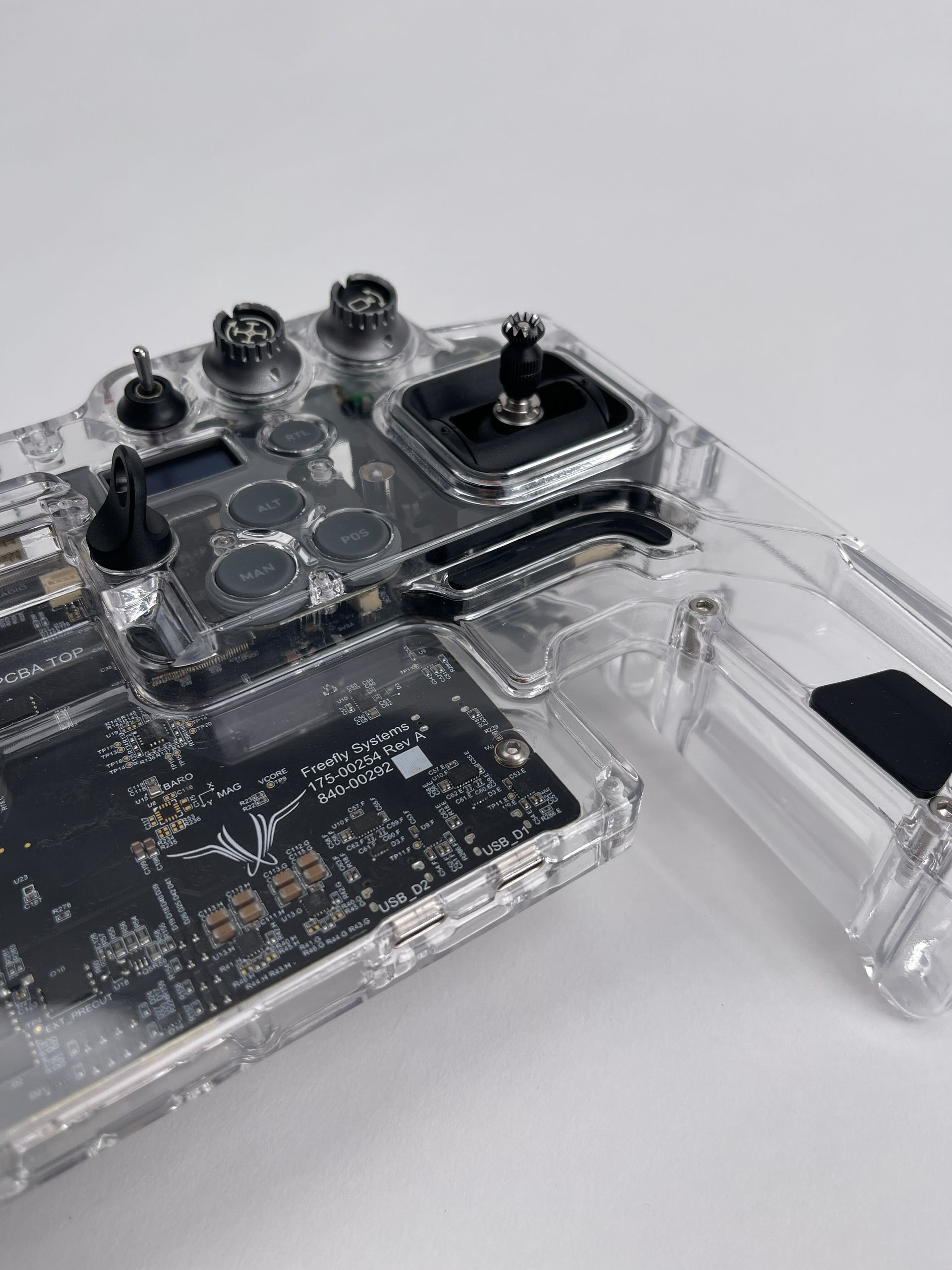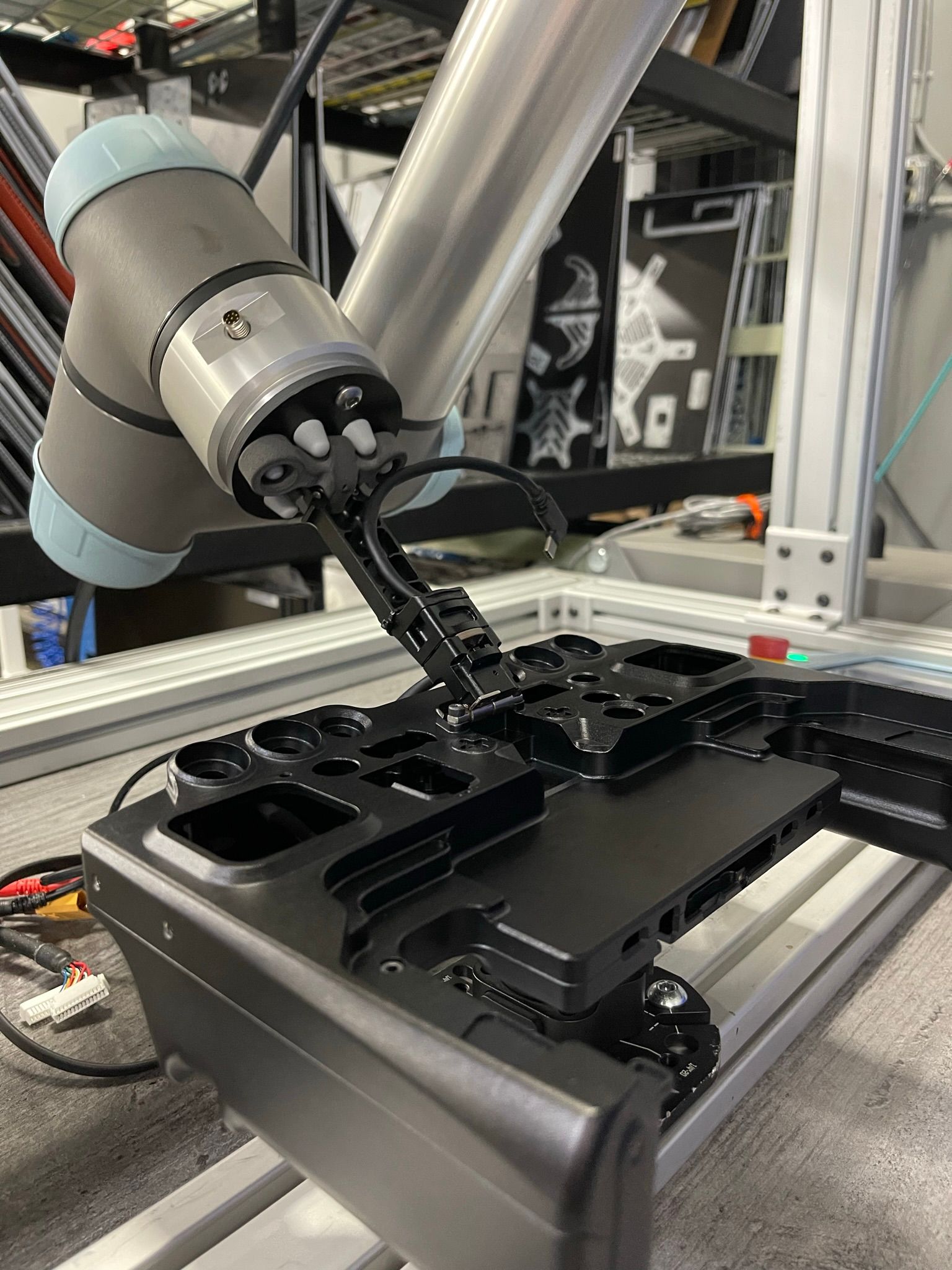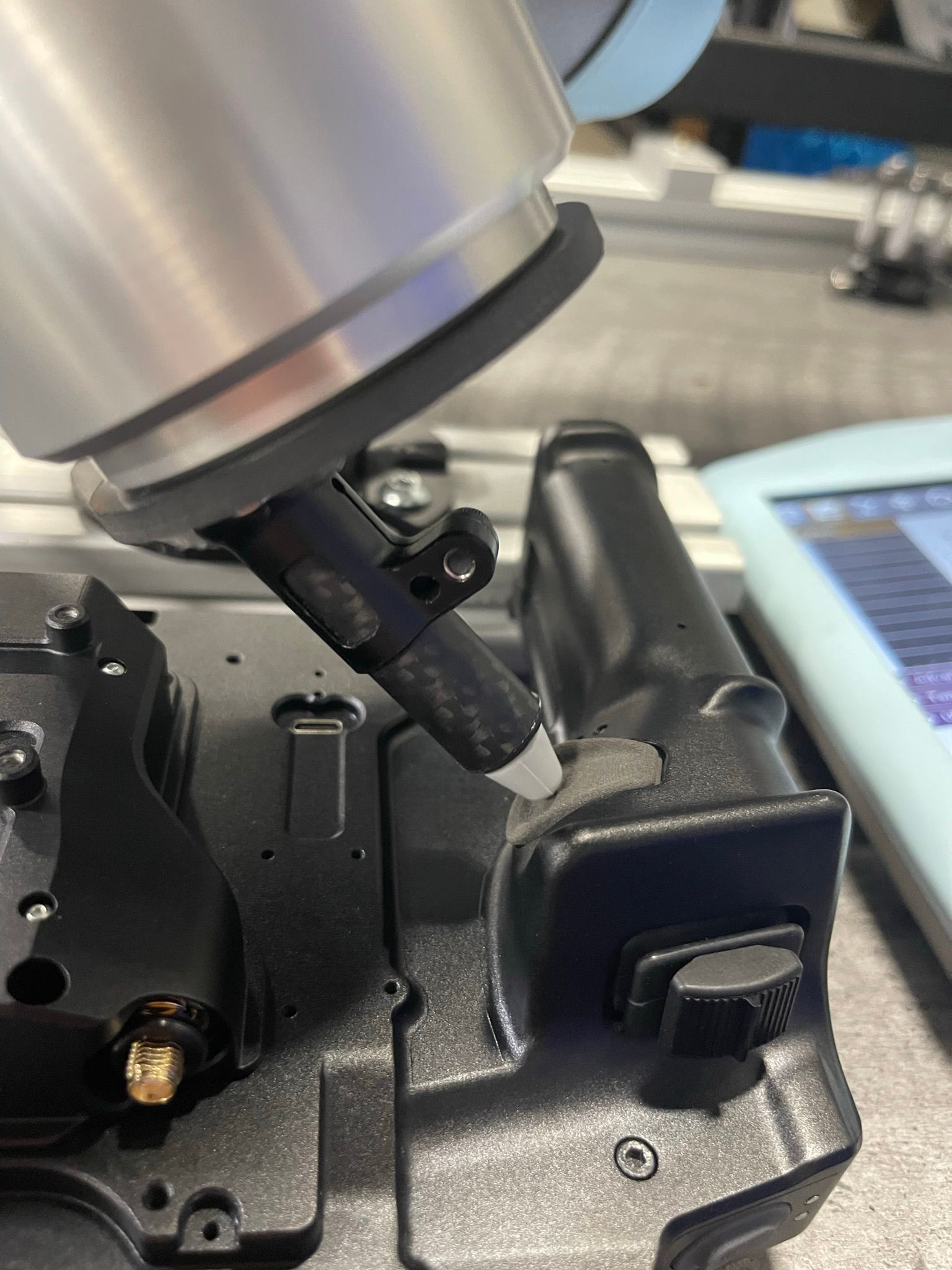Pilot Pro
PROJECT ROLE: PRINCIPAL ENGINEER
During the development of the Astro project in 2021, an off-the-shelf controller was chosen as the ground control station rather than developing a controller at the same time as the UAV, smart batteries, and payload gimbals. In 2023, once Astro production was well underway, I took on the task of creating a Freefly controller for Astro. My role was to oversee all aspects of the controller's creation:
- Design: designed every mechanical part, the entire cable harness; created the PCBA outlines and placed connectors to ensure a smooth assembly process; accounted for the thermal output of the electronics and optimized the mechanical design for thermal regulation; designed radio module assemblies and implemented the Freefly Radio Standard; designed all accessories that would be launched with Pilot Pro; devised the packaging solution. I also oversaw aircraft side radio integrations on Astro and Alta X
- Testing: facilitated and performed mechanical structure and lifetime tests.
- Manufacturing: spearheaded process design; created work instructions; generated quality documentation; handled parts quoting; managed vendors; successfully led cost negotiations; trained production teams.
- Project Management: provided prioritization guidance; set schedules; conducted review meetings; updated stakeholders.
- Product Management: made decisive calls on mechanical, UX/UI, and software features, championing user-centric design; conducted market and competitor research, actively contributed to feature planning, and played a key role in their implementation.
I was excited to take on the latitude to steer the project towards my vision for the ideal ground station. This was the first project I was given full ownership of from start to finish, and I relished the level of visibility since the ground station is the primary point of user interaction; its function and performance would greatly affect a user’s sentiment toward using not just the controller, but also the UAV it was controlling.
Team Size
5
Days to Launch
151
Launch Date
8.15.23
Part Count
306
Key Challenges
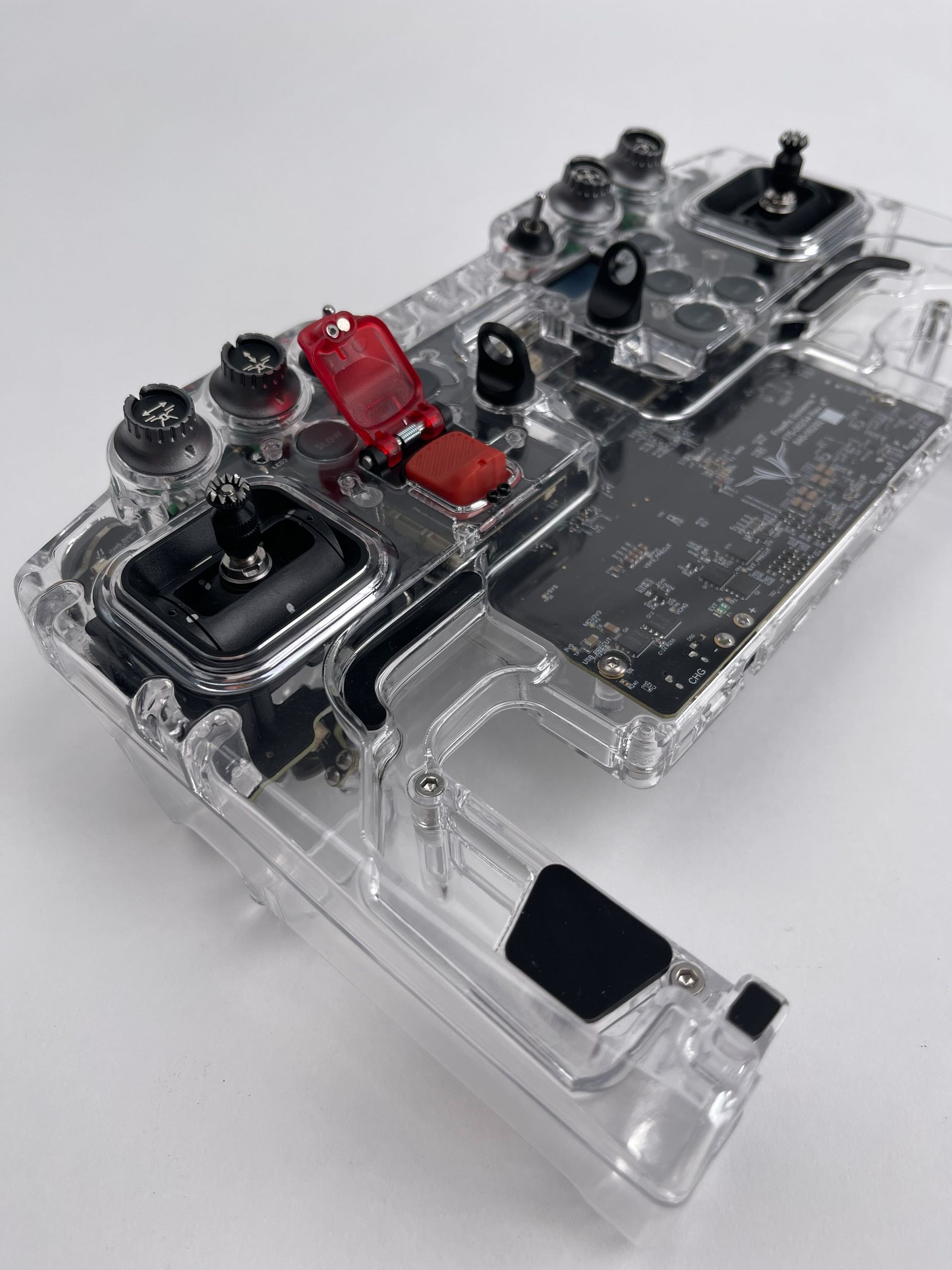
Daring to be Different
During the competitor research portion of this project, I saw many trends in how others designed their UAV ground stations. They seemed to be an afterthought to the UAV itself, a generic copy and paste of a controller design that had not been updated for a decade. This gave me the opportunity to highlight what ground stations truly are: the single point of contact between the user and UAV that drives the entire user experience. To make sure that this product would stand out and be adopted by not only Freefly customers but other pilots flying other UAVs, I sought to differentiate Pilot Pro from the rest of the offerings and have features that provide real value to the user.
My task was to place Pilot Pro head and shoulders above the competition while making appropriate trade offs due to the condensed project timeline. To narrow down which features to include in the project scope, I worked backward from the customer, creating different user stories that I envisioned once the product was widely available. These user stories included potential customers that would use Pilot Pro to control non-UAV devices.
Here are some features that made the cut:
- An articulating screen that lets the user expand the functionality of the controller whether they are flying manually, treating Pilot Pro as an automated ground station, or using the screen to fly solely by video. Further increasing the useability, the articulation also allows the tablet to be stored in a protected state when not in use. This is a feature exclusive to Pilot Pro.
- A kill switch with triple redundancy and a safety cover that gives the pilot ultimate control to kill the drone in emergency situations without relying on any other applications running on the ground station. This is a feature that many other controllers lack.
- Two foldable sticks allow Pilot Pro to pack down into a form factor where all critical touch points are protected even when bouncing around mid-transit.
- A secondary OLED screen gives the pilot all critical UAV information such as altitude, battery life, and current status/flight mode. This screen is directly connected to the radio link meaning it will always display accurate UAV status, even if the ground control station software is not running.
- Astro and Alta X are industrially capable UAVs, so the controller needed to be built to survive bumps, drops, and anything else a firefighting crew could throw at it…, or on it. To make sure Pilot Pro can stand up to this task, it is constructed with durable 6061 aluminum, critical controls are protected from incidental contact, and internal features prevent damage due to heat, dust, and water ingress.

An Adventure in Ergonomics and Useability
The Pilot Pro is one of the few Freefly products where the user is in constant contact with the product while using it. This adds another consideration to part design which is both challenging and rewarding. We learned through using a 3rd party controller that the user experience for the drone is hugely impacted by the quality of the controller. When the project started, I sat down and listed out all of the features that would made the Astro's first controller a joy to use, as well as the items that did not. Here are some of the key items that I paid attention to during the design process:
- Handle design and control layout was at the top of the list of design priorities. The user’s comfort during continuous flight was paramount while not limiting their access to all any of the controls. This effort took many iterations, starting with modeling handle shapes out of foam and then moving on to printed prototypes which included functioning button, trigger, and rocker positions. Once the layout was roughly put together, I reviewed the design against a range of hand sizes and flying grips styles to make sure that Pilot Pro's design did not compromise accessibility. In the end, I created a product that allowed the pilot to control 10 inputs to the drone without moving their hands from the flight control position.
- Even though the Pilot Pro controller itself would never take off or fly, keeping weight at a minimum ensured the controller would be comfortable to use for hours at a time. I paid close attention to the layout of my internal components to ensure the controller could be set down on a range of inclinations without tipping over, and had a weight balance that made it comfortable to hold.
- Battery life, while an obvious consideration, ended up being a key feature and a beloved quality. Our first prototype relied on an external battery for power in an effort to remove the potential design time of a battery and battery management system from the project timeline. However, after using this version it became clear that we would be doing the customer a disservice if we kept this design. Fortunately I had anticipated this eventuality and proactively designed the Pilot Pro's handles so I could package two sets of 2S1P battery packs into them. While the addition of these batteries increased the length of the project, the payoff was worth the extra time. With this improvement, customers can use the controller all day without a recharge or replacing the batteries.
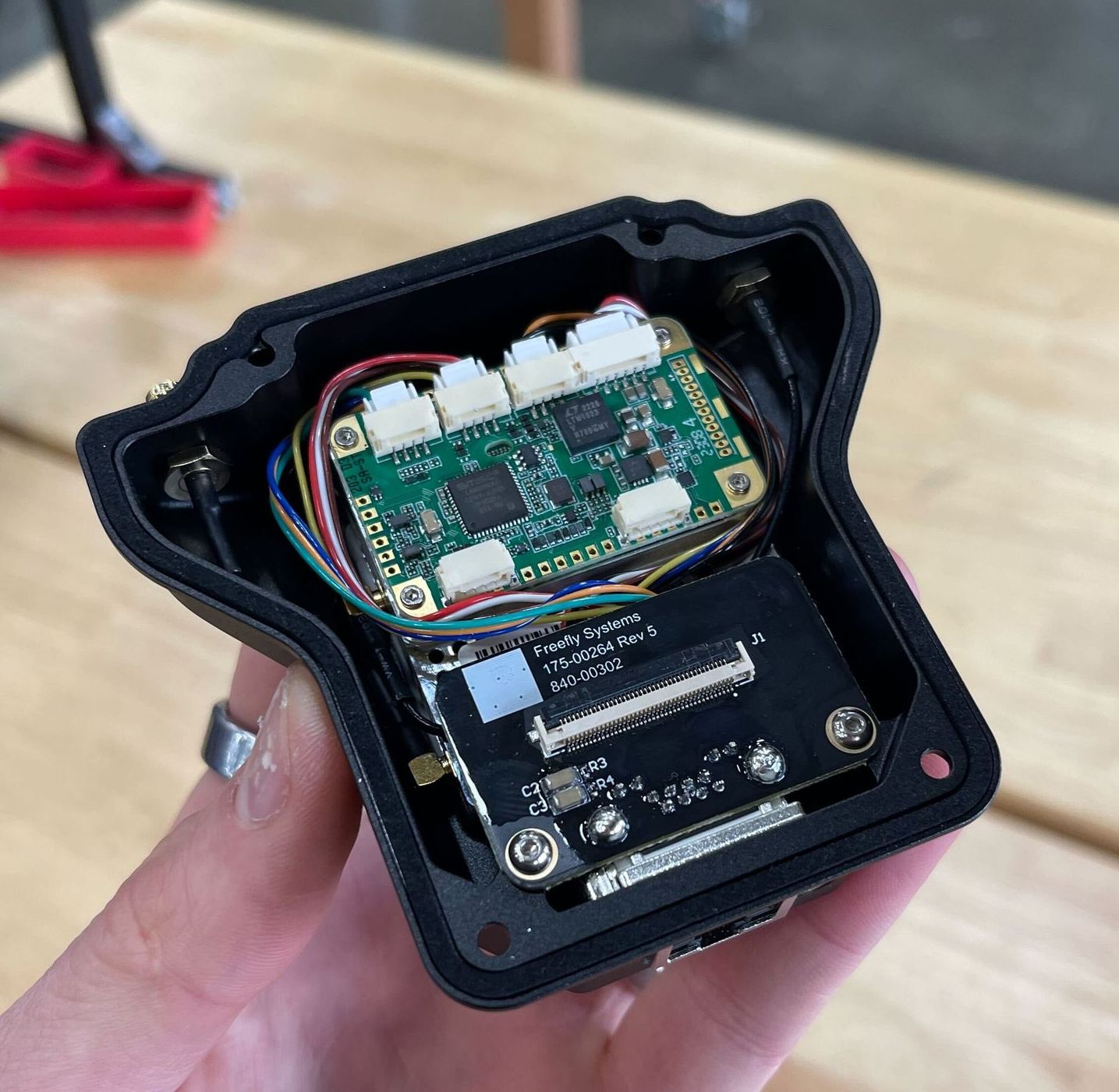
A Higher Standard
As part of the Pilot Pro development, the Freefly Radio Standard needed to be designed. This would allow us to easily integrate more radios as time went on and would allow radio manufacturers to create their own radio modules to interface with Pilot Pro. The first step was to determine the requirements the standard would need to meet to be able to accommodate all of the radios on the Pilot Pro roadmap. Next, I determined what features to add to the standard in order to accommodate future radios that may come into the market during the Pilot Pro's expected product life (5-7yrs). In the end, I came up with a two tiered standard to give customers and integrators the exact level of flexibility when integrating radios.
The first tier is the most flexible; it allows mounting radios directly to the Pilot Pro, requires no extra hardware, and does not require complex interfacing geometry to control the connection. While this tier has many advantages for power integrators, it does lack the ability for the radio module to be swapped quickly and easily. This tier of the standard is meant for the most demanding integration endeavors which may only be installed as prototypes or limited to few Pilot Pros. It also leaves the door open to the most possible radio solutions.
The second tier interfaces with the first and upgrades the standard's user experience by adding the ability to quickly swap the radio. This tier also includes an ethernet chip to manage the communication between the radio and Pilot Pro. This tier is designed for radio modules that will be produced in greater numbers and for applications where the user may need to frequently switch between radios based on connected device, location, or legislature.
I have integrated three different radios into modules for use with Pilot Pro. These range from OEM radio modules to stand alone radio chips which required custom carrier PCBA design. Due to the flexibility of the standard, I was able to get each one designed in less than a day.


